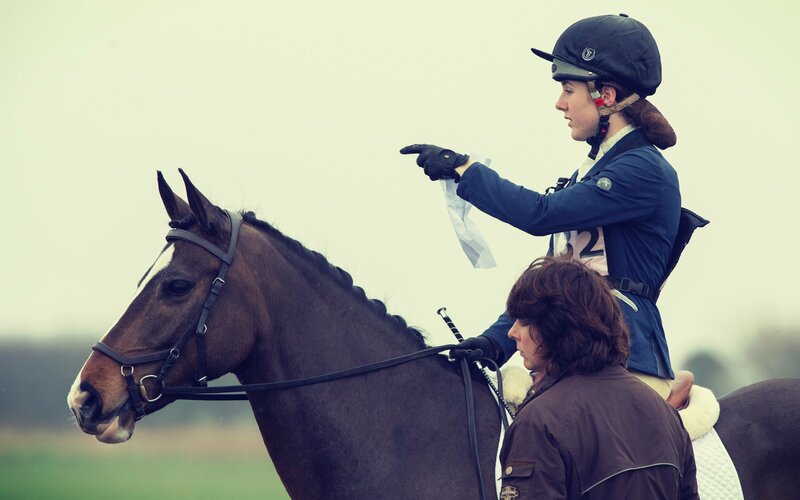
Warm-up advice for all three phases
When the collecting ring is bustling and the pressure is on, preparing to perform at your best can be a difficult and daunting task – here are some top tips to help you warm up.
DRESSAGE
- Go straight to the steward and let them know you’re here. Find out which arena is yours so you know exactly where you need to be and when.
- Start with at least 10 minutes of simply walking around to loosen and relax the horse, especially if they’ve been travelling for an hour or more.
- Every horse is different; some get hotter the more you do and with them you might want to focus on loosening up the muscles without doing too many of the movements in the test, while others will need to be switched on and sent forward.
- Some horses benefit from either being lunged or ridden twice before their test – if this is the case you will need to factor in extra time.
- Factor in time before the test to make any last minute tack adjustments, have a breather and regroup.
SHOW JUMPING
- Go to the collecting ring and find out whether things are running to time. There is no point being ready to go only to have to hang around while your horse gets bored and you switch off.
- In BE80(T) classes make use of course walks because coaches will highlight specific areas of concern, for example ground conditions and using the right studs, the gradient and riding related distances.
- Working-in areas tend to vary enormously in the space available and the conditions – suss out the situation before you get on board.
- If you’ve come straight from the dressage, you won’t need as long to warm-up than if your horse has been standing around for a few hours.
- If the ground is sticky or wet you should focus on creating more engine to enable the horse to power out of deeper ground and concentrate on keeping the balance.
- If the ground is on the firm side, you don’t want to be over-jumping.
- Aim to produce a balanced canter relevant to the height of course you are jumping while maintaining control, straightness and the ability to land on the correct leg.
- Some horses need a bigger fence to get them up in the air, but for the majority staying happy and confident over smaller fences is far more beneficial.
CROSS COUNTRY
- Go on course walks and take pictures of the fences, then sit down somewhere quiet and run through the course, visualising how you are going to ride it.
- Find out if it is running to time. There is no point having your horse ready to go only to discover there are 15 more horses before you.
- Focus on rhythm and balance in the warm-up. Establish a good quality canter in a forward rhythm. Aim to get the horse thinking forward and in front of your leg.
- Try to achieve a more open jump compared with the show jumping and, once you have cleared the fence on both reins, try riding it at an angle and off a turn to ensure your horse is switched on and listening to you.
- Give yourself time to catch your breath and check your girth is tight before you head to the start.
